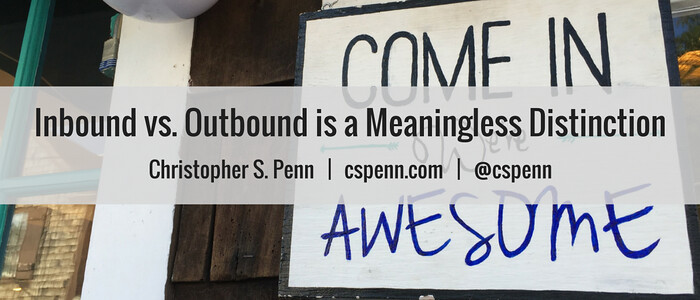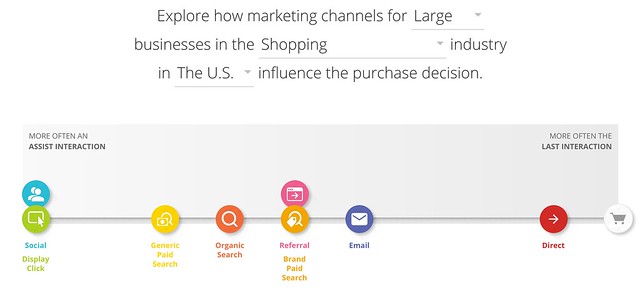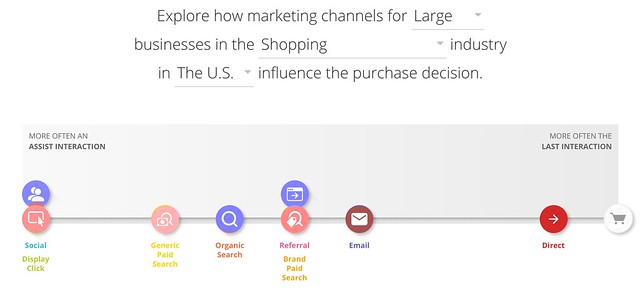A surprising number of people have asked me in the past day this question or variations thereof:
“When should we use inbound vs. outbound marketing?”
The answer to this question is simple: Stop asking this question.
“Inbound” marketing is a meaningless distinction. So is “outbound” marketing. By drawing a distinction between passive and active marketing efforts, we needlessly separate resources, strategies, measurement, and results.
Why is this distinction meaningless? “Inbound” marketing doesn’t exist – from the perspective of our customer. Neither does “outbound” marketing. The only thing that exists from the perspective of our customer is whether our marketing answers questions they have or helps them solve problems they have.
Some tactics and methods clearly lend themselves to a more passive approach to the customer, like organic search engine optimization through content marketing. Other tactics, like email marketing or picking up the phone, are clearly more active.
The New Reality
Assuming that your marketing should be predominantly “inbound” or “outbound” ignores a key marketing reality:
The customer journey is both active and passive in nature.
Consider the following journey to purchase, for large shopping websites:
Let’s color the more active, “outbound” channel red, and the more passive, “inbound” channels blue:
If we only do “inbound”, how much of the journey do our prospective customers complete? About half. The same is true of only “outbound”. Customer journeys like the ones shown above are like a Jenga tower – the more pieces we pull out, the more likely the tower is to fall over. The more we isolate tactics and strategies into “inbound” vs. “outbound”, the more likely we are to sabotage our customers’ ability to buy from us.
We must be present throughout the customer’s journey to purchase so that when they do want to purchase, we are top of mind in a positive way.
The Real Question
Very often, the real, unasked question is, “What’s cheaper?”. Various companies through the years have positioned “inbound” marketing as cheaper, easier, or more sustainable; when you examine individual tactics or campaign-level strategy, this is often true. It costs fewer hard and soft dollars to blog than it does to run a massive AdWords campaign.
However, focusing only on what’s cheap and easy ignores the most important question. We should be asking, at what point in our current customer journeys do we lose people?
Once we understand where we lose our prospective customers, we are able to reinforce that part of the journey with appropriate, context-specific strategies and tactics. If we address the gaps, the failures in our customer journey, we’ll generate results and revenue that will fund even more marketing.
Serve Your Customers
Forget “inbound” vs. “outbound”. Be where your customers want you to be, when they want you to be there, and serve them well. Do as much as you can with the budget and resources you have, and focus on the results, not the methods.
You might also enjoy:
- Almost Timely News, February 11, 2024: How To Evaluate a Generative AI System
- You Ask, I Answer: AI Music Collaborations and Copyright?
- Mind Readings: What Makes A Good Conference/Event?
- Almost Timely News: Recipes vs. Principles in Generative AI (2024-03-03)
- You Ask, I Answer: Reliability of LLMs vs Other Software?
Want to read more like this from Christopher Penn? Get updates here:
 Take my Generative AI for Marketers course! |





Leave a Reply